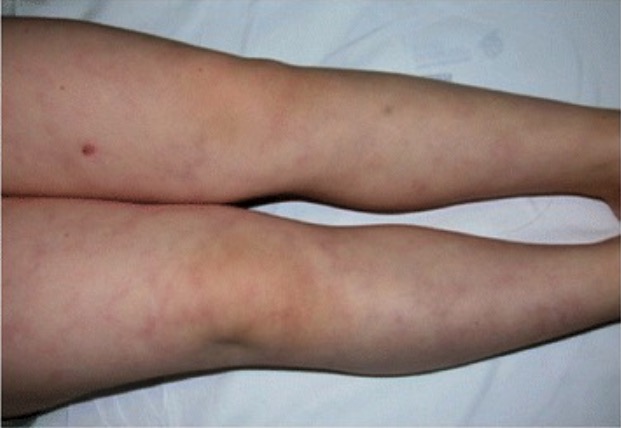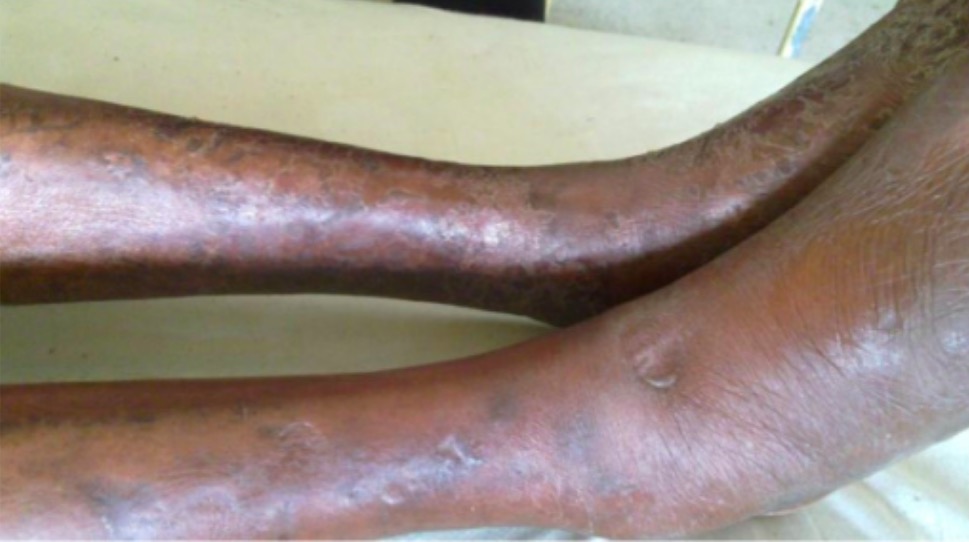Playlist
Show Playlist
Hide Playlist
Risk Factors of Thrombotic Disorders
-
Slides ThromboticDisorders.pdf
-
Download Lecture Overview
00:02 Thrombosis. 00:03 How do you form thrombi? It’s called, well, in Pathology, we have Virchow’s triad. 00:11 In Virchow triad, there are three possibilities or three situations, in which you are then going to facilitate thrombi formation. 00:21 That include, well, we had one discussion in great detail. 00:24 Oh my goodness, and that was when endothelial cell was damaged. 00:28 Vessel injury, you'll form a thrombi. 00:32 Number two. 00:33 What if the blood just remains or it’s in a state of turbulence? For example, you may have a DVT and there you are remaining static, or a atrial fibrillation, trouble in the blood flow on the left atrium. 00:48 Aren’t you then at risk of developing a thrombi? Of course you are. 00:56 It's the second possibility or thirdly, I just went through a list with you in the previous discussion, with the picture of going through hypercoagulable situations. 01:08 Including Factor V Leiden prothrombin 20210, or anti-thrombin three that’s being lost and there's something else that will be coming up shortly in which we will then call antiphospholipid syndrome. 01:21 These are the three major situations part of your Virchow’s triad, that are facilitating thrombi formation. 01:31 Under vessel injury: trauma, surgery, inflammation could result in vessel injury in thrombi formation. 01:38 What happened? What is the common denominator in all those? Endothelial cell damaged. 01:43 What’s being expressed again from the subendothelial collagen? Von Willebrand factor. 01:49 Blood stasis. 01:50 And the patient that I gave you is a lady, who may have been on a long plane flight, immobilized or pre-surgery. 01:58 Anyone who's laying there for a long period of time. 02:01 Blood stasis developing a DVT. 02:04 Varicose veins, completely different from DVT. 02:08 What are varicose veins? Superficial veins or could you form a thrombus? Sure. 02:14 It’s called stasis dermatitis. 02:17 What's the risk of going on to a PE please with varicose veins? Oh, very, very low, right? 'Cause you would have to then move the thrombi and embolize it from the superficial saphenous to the deep vein and then up towards your pulmonary vasculature. 02:32 Rare. 02:33 Could it occur? Sure, but low risk. 02:36 Under blood stasis maybe CHF, For example, let’s say that two weeks have gone by. 02:44 Two weeks after an MI have gone by. 02:47 After two weeks of an MI gone by, then you have possibility of a true aneurism developing. 02:55 Notice I didn't say about 3 or 14 days or such. 02:58 I gave you little bit later about two weeks and thereafter, Once you form that true aneurism, there’s every possibility once again with blood statis that you may then form a thrombi. 03:10 In fact, you know the treatments, for example, you've heard of mural thrombi. 03:16 Is the fact that you would give an anticoagulant or hyperviscosity. 03:21 For example, you have a patient that has a M spike. 03:26 On serum protein electrophoresis. 03:29 In other words, a gamma wave has not become a gamma spike. 03:32 But this time you find that the patient has elevated levels of IGM. 03:38 There’s no lytic bone lesions and we have lymphadenopathy. 03:42 Welcome to Waldenstrom’s macroglobulinemia. 03:46 Condition in which you have too much IGM resulting in more commonly hyperviscosity or a JAK2 step type of mutation in which now, the patient complains about taking hot bath and during the hot bath is having pleuritis. 04:04 Welcome to polycythemia vera, where the muscles upon exposure to the hot environment degranulate, lease histamine and cause pleuritis. 04:15 Hyperviscosity, the risk factor for thrombi formation. 04:21 Hypercoagulable, under this acquired maybe malignancies or contraceptives. 04:26 Remember, you have a young lady. 04:28 unbeknownst to her, she’s been taking oral contraceptive pills that might be unfortunately filled with estrogen. 04:35 There's every possibility that she may then develop acquired DVT or hereditary. 04:41 For example, we talked about those in which you are deficient of those anti-coagulants. 04:49 The types of thrombosis include the following. 04:51 DVT. 04:53 These will be the large veins but these are bit deep down. 04:56 Maybe popliteal, femoral a little bit higher up that will be scary. 05:02 Pulmo emboli is a consequence of a DVT and the thrombosis at unusual sites. 05:11 Maybe you have a patient that does have polycythemia vera. 05:14 and ends up developing a thrombi in the hepatic vein What do we call this again? Budd-Chiari, right? Budd-Chiari or will take a look in a little bit, whenever there's thrombi formation taking place, unfortunately, you could have a lady that have a recurrent, spontaneous abortions and that's just sad.
About the Lecture
The lecture Risk Factors of Thrombotic Disorders by Carlo Raj, MD is from the course Hemostasis: Basic Principles with Carlo Raj.
Included Quiz Questions
Which of the following are components of Virchow's triad in the development of venous thrombosis?
- Blood stasis, hypercoagulable state, vascular endothelial injury
- Inflammation, hypercoagulable state, vascular endothelial injury
- Inflammation, blood stasis, vascular endothelial injury
- Inflammation, blood stasis, hypercoagulable state
Which of the following conditions causes venous thrombosis as a result of a hypercoagulable state rather than blood stasis?
- Factor V Leiden
- Polycythemia vera
- Waldenstrom macroglobulinemia
- Varicose veins
- Congestive heart failure
Which type of immunoglobulins (Ig) is produced excessively in Waldenström macroglobulinemia?
- IgM
- IgG
- IgD
- IgE
- IgA
Which of the following groups of drugs is most likely to cause a hypercoagulable state?
- Oral contraceptives
- Diuretics
- Tricyclic antidepressants
- Beta lactam antibiotics
- Beta blockers
Which of the following increases the risk of thrombosis?
- Vessel injury
- Walking
- Hydration
- Thrombocytopenia
- Vasodilation
Customer reviews
5,0 of 5 stars
| 5 Stars |
|
5 |
| 4 Stars |
|
0 |
| 3 Stars |
|
0 |
| 2 Stars |
|
0 |
| 1 Star |
|
0 |





